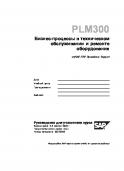Uniforms & Equipment of the Japanese Footsoldier -- Late War
This document was submitted by our user and they confirm that they have the consent to share it. Assuming that you are writer or own the copyright of this document, report to us by using this DMCA report button.
Uniforms & Equipment of the Japanese Footsoldier -- Late War
Japanese Insignia [Click item in photo to see explanation of what it is] Japanese Weapons Imperial Japanese Reading List Links to Imperial Japanese sites
Photos and text on this page originally came from World War II Infantry in Colour Photographs by Laurent Mirouze. All copyright to them is to Windrow & Greene Publishing Ltd. London.
Early War Japanese Infantry Kit Late War Japanese Infantry Kit
Contact page
The simple, lightweight Japanese uniform was from the first, quite suitable for tropical campaigning, and underwent little change during the war years. As wartime shortages began to bite there was a certain amount of substitution of non-strategic materials, however; many leather items being replaced with cheaper equivalents made of vulcanized fiber or rubberized cloth. This soldier is wearing the lightened equipment typical of the jungle campaigns. The cap, shirt, and "horseshoe roll" containing basic
necessities were characteristic of the defenders of the Pacific Islands against the U.S. forces, and of Burma against the British 14th Army. Although some issue items -- e.g. the gasmask -- have been discarded as useless encumbrances, our soldier still carries, fixed to his bayonet, the good luck flag his family presented to him when he left. 1. Campaign cap -- Sen-bou -- in light cloth, introduced in 1938; manufactured in various materials, it was the most characteristic headgear of the Japanese soldier. It always bears either the yellow star of the Army or the anchor of the Imperial Marines on the front. The example illustrated has an 'economy' chinstrap, and tightens at the rear by means of a lace. 2. Neck flap -- Bou-tare -- hooked to the cap for tropical cam paigning; it is made from four rectangles of cloth. 3. Cotton shirt -- Bousho Jyu-han -- normally worn under a tunic, but worn alone in hot climates; it buttons all the way down the front, and has two breast pockets. Rank insignia is fixed above the left pocket -- here, that of a private first class. 4. M.1932 steel helmet -- Tetsu-bou -- with its quilted cloth sun-cover (which also bears the yellow star badge). The helmet was often worn on top of the fatigue cap. 5. "Horseshoe roll" -- Seoi-bukuro-- of spare clothes and basic necessities: a less encumbering way of carrying equip ment than the issue knapsack, and one that has been adopted by soldiers in many armies over the centuries. It could be made with the tent section, or a purpose-made hold all. 6. Mess tin -- hangou -- of khaki-painted aluminum, strapped to the equipment roll. 7. Final model canteen -- Suitou -- in khaki-painted aluminum, in its slung carrier.* 8. Light canvas haversack -- Zatu-nou -- containing the bare minimum of personal items, washing kit, eating utensils, minimal rations, etc. * 9. The soldier has managed to keep his leather belt -- Tai-kaku, but his ammunition pouches -- Dan'yaku gou -- are made of vulcanized fiber, typical of the latter part of the war; fabric belts were also common. Note: commonly the front ammo pouch(s) were called zen gou and rear ammo pouch is called kou gou. The IJN called ammo pouches Do-ran. 10. This cloth bag -- Hokobukuro -- marked with ideograms, contains the soldier's most valued possessions and his personal documents. 11. Cotton 'half-breeches' -- Bousyo-ko -- gathered at the ankle by buttons or laces. The outline of these trousers varied, from something resembling jodhpurs to a straighter 'plus-fours' shape. 12. Puttees -- Kya-han -- of either heavy wool or light cotton cloth, held in placed by the characteristically Japanese cross-gathered tapes. 13. Standard issue natural leather Army boots -- amiage-gutu -- in the tropics these were often replaced by 'jikatabi', campaign shoes of fabric and rubber, with a separated big toe. 14. Model 38 rifle -- Sanpachi (38) Shiki Hoheiju "Arisaka" -- the number referring to the 38th year of the Emperor Meiji's dynasty, or 1906. There was an attempt to replace this outdated 6.5mm caliber weapon with the newer Type-99 in the 7.7mm caliber already employed by the Model 92 machine gun; but it was never completed, and the confusion of calibers made for logistic difficulties.
* While not an exact match for IJA equipment, Chinese canteens and breadbags can provide a passable appearance
until the correct items are obtained. ©2003-2004 Imperial Japanese Army Reenactor's Resource Site Please just ASK before using anything from this website Website design by:

Related documents
3 Pages • 748 Words • PDF • 529.4 KB
3 Pages • 754 Words • PDF • 544.1 KB
108 Pages • 13,884 Words • PDF • 23.3 MB
644 Pages • PDF • 23.2 MB
228 Pages • PDF • 110.3 MB
152 Pages • 26,203 Words • PDF • 15 MB
441 Pages • 52,690 Words • PDF • 9.8 MB
177 Pages • 138,398 Words • PDF • 42.8 MB
146 Pages • 104,083 Words • PDF • 51.7 MB
190 Pages • 144,682 Words • PDF • 5.4 MB
233 Pages • 100,196 Words • PDF • 1.4 MB
148 Pages • 58,011 Words • PDF • 41.2 MB











